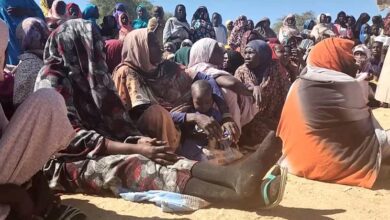WMO warns of up to seven major storms in the North Atlantic by 2024


Typically, an average year has 14 named storms with wind speeds exceeding 65 kilometers (40 miles) per hour. This year, however, 17 to 25 storms are expected, of which four to seven have the potential to become major hurricanes with winds of at least 178 kilometers (111 miles) per hour. This year, however, 17 to 25 storms are expected, of which four to seven have the potential to become major hurricanes with winds of at least 178 kilometers (111 miles) per hour. The usual average is three major storms per year.
“Just one storm can set back many years of socio-economic development. For example, Hurricane Maria in 2017 caused Dominica to lose 800% of its Gross Domestic Product,” explained WMO Deputy Secretary General Ko Barrett.
The forecast for an above-average hurricane season, lasting from June 1 to November 30, is attributed to rising ocean temperatures and the development of the anticipated La Niña weather phenomenon, leading to The sea water cools significantly.
Benefits of monitoring and early warning
WMO Track the storms though Tropical Storm Program. There have been eight consecutive years of above-average activity, with the most recent below-normal season occurring in 2015. Improved early warning and disaster risk management have significantly reduced deaths related to storms.
However, according to the Deputy Director of WMO, small island developing states in the Caribbean are still more severely affected.
WMO and partners have prioritized early warning initiatives for small islands under an international framework Early warning for every initiative. They will advocate for more targeted and coordinated investment in early warning systems International Conference on Small Island Developing States takes place next week in Antigua and Barbuda.
From 1970 to 2021, tropical cyclones – including hurricanes – were the leading cause of human and economic loss globally, causing more than 2,000 disasters. Even so, the death toll fell from more than 350,000 in the 1970s to less than 20,000 between 2010 and 2019. Reported economic losses between 2010 and 2019 amounted to $573.2 billion.
What’s in a name?
Naming tropical storms simplifies tracking and discussion of specific storms, especially when multiple storms are active at the same time. This practice helps avoid confusion among meteorologists, the media, emergency management agencies and the public.
WMO has established strict procedures for naming tropical storms, varies by region. In the Atlantic and Southern Hemisphere, tornadoes are named alphabetically, alternating between male and female names. In other regions, names are in alphabetical order by country.
“We need to be especially vigilant this year due to near-record ocean temperatures in the Atlantic hurricane-forming zone and the transition to La Niña conditions, which together create favorable conditions,” Ms. Barrett said. conditions for increased storm formation.




